In Shenzhen, Studio 10 creates a theatre of a shop for Chinese womenswear label Geijoeng that facilitates visual encounters between customers as well as transactions between online and offline environments.

In China, where shopping online means shopping in the world’s largest and most efficient market (where you can have a kuai di [delivery] at your door within mere hours of placing an order), there is really no reason to do all that extra legwork of going to the mall – unless, of course, there is one. For example, this Shenzhen store designed by Chinese practice Studio 10.
Womenswear label Geijoeng had asked for a store experience that portrayed its brand. Studio 10 responded by subjecting glass, acrylic, stone and fabric to a fascinating physics of reflection, refraction and superimposition – creating a 120-square-metre space that offers visually and texturally sumptuous effects despite being washed with just a handful of cool tones.

It is a smart interpretation of Geijoeng’s philosophy of “singular pluralism” – and makes for a wonderful spatial theatre with plenty to see. As the eye travels across the interior landscape of plinths and cylinders, it might appreciate details such as how the frosted rods in the display trusses are echoed by the light tubes overhead, or the way clear glass bricks have been laid to acquire a density of tone. Light, used as a spatial modulator, further heightens the effect of interplays. A perceptibly dimmed entry passageway preludes the arrival into the contrast of the bright, white-lit interiors.
“The spatial design is meant to create rich spatial hierarchy and ghostly spatial dimensions,” says Shi Zhou, US-registered architect and founder of Studio 10. She worked closely with Geijoeng throughout the design and execution of the project. The mood of the space, generated from such control and focus, is antithetical to the colour and the crowd of most shopping environments today.
“As online shopping has become so popular and seamlessly convenient in China, the shopping experience in a physical store has become crucial. Every inch of the physical retail space has been carefully revisited to create the most amazing shopping experience,” Zhou says.

All this design, including the choice of using a green velour curtain from a Kvadrat collection by Raf Simons, is part Studio 10’s assiduous strategy to fortify Geijoeng’s brand image. Referring to how the fitting room, playfully translucent and isolated in the centre of the floor, is conceptualised as a stage (complete with heavy curtains), Zhou says: “The physical retail space not only reflects the brand’s identity, it also acts like a container of shoppers’ activities – a stage that encourages shoppers to take photos for sharing on social media.” Of course, offline foot traffic must translate to its online counterpart – and vice versa, presumably with powerful knock-on effects.
With the onslaught of smarter, quicker and all-round more compelling e-commerce, the brick-and-mortar shop has had to reassert itself in new ways. One trend is that businesses today are scaling up through flagships, instead of expanding through a series of dispersed new stores. The power of big stores to draw a crowd (with upsized real estate and greater capacity to program variety and change) is now being augmented by technologies of ‘new retail’ that integrate online and offline experiences with logistics through big data.
Despite this trend, Studio 10 thinks that strong, crafted spatial experiences still have a firm foothold in the retail landscape. Says Zhou, “We believe in materials, craftsmanship and the creation of unique spatial experience, which has timeless beauty and attraction.”
INDESIGN is on instagram
Follow @indesignlive
A searchable and comprehensive guide for specifying leading products and their suppliers
Keep up to date with the latest and greatest from our industry BFF's!

London-based design duo Raw Edges have joined forces with Established & Sons and Tongue & Groove to introduce Wall to Wall – a hand-stained, “living collection” that transforms parquet flooring into a canvas of colour, pattern, and possibility.
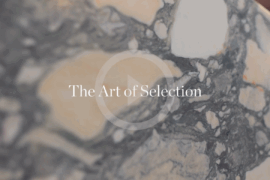
CDK Stone’s Natasha Stengos takes us through its Alexandria Selection Centre, where stone choice becomes a sensory experience – from curated spaces, crafted details and a colour-organised selection floor.
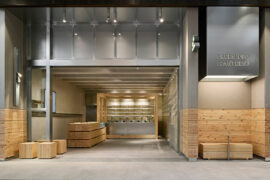
Hecker Guthrie brings a natural, material-led design to Green Cup’s new Chadstone store, pairing pine, steel and glass with a grab-and-go layout inspired by the brand’s fresh, organic ethos.
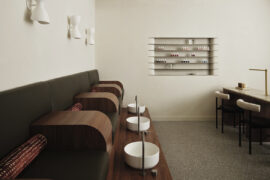
Tom Mark Henry refines a layered design legacy into a softly sculpted retreat in Redfern, where light, tactility and crafted detail define a new expression of restrained luxury.
The internet never sleeps! Here's the stuff you might have missed
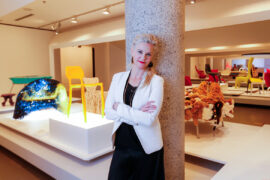
In what the DIA describes as a “major boost for the profession,” a NSW Parliamentary Commission has released a report on the Review of the Design and Building Practitioners Act 2020.
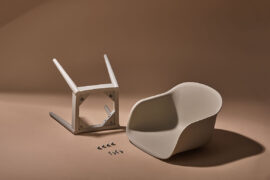
MillerKnoll releases the 2025 Better World Report showcasing how design can drive meaningful change through measurable progress across social, environmental and governance initiatives